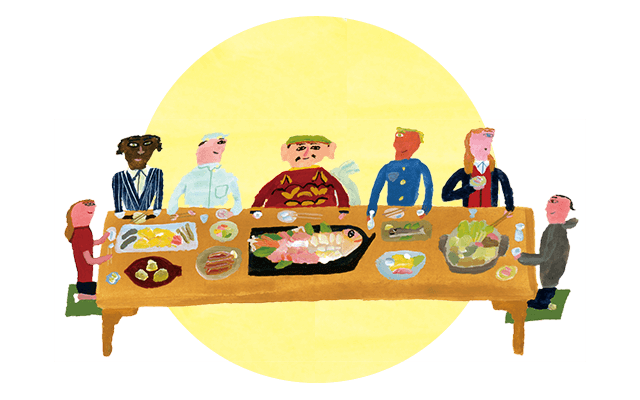
Harima Archives
2022.03.18 The Story Told by Harimanokuni Fudoki

A Record from about 1,300 Years Ago
Rice cultivation in Japan has started from the Jomon (ca 10,000 BC–ca 300 BC) to Yayoi (ca 300 BC−ca AD 300) periods. It is not clear when and where sake-brewing started after that. However, there are several accounts about sake in Harimanokuni Fudoki (records of Harima Province), compiled about 1,300 years ago (early Nara period). Here we introduce two stories from it that are particularly interesting.
Sake Brewed to Find a Father
There is another scene about brewing sake in a story about finding a father in Harimanokuni Fudoki. “A long time ago, there was a place called Arata in Takacho. The goddess Michinushi Hime no Mikoto bore a child without a father. Since she did not know the god who fathered the child, she made a rice paddy and brewed sake to find him. Gathering the male gods together, she gave the child the sake. The child then went to its father and poured his sake, thus identifying the father.”
Sake-brewing Using Yeast from Niwata-jinja
From 2013 to 2015, which marks the 1,300th anniversary of Harimanokuni Fudoki being compiled, the Harima Sake Culture Tourism Council consisting of four brewery unions of Harima in Hyogo Prefecture created a new sake based on the story that Niwata-jinja was the birthplace of sake. The new sake was named Niwasake. It is unique because this sake, made by each brewery, was brewed using yeast and koji mold harvested from Niwata-jinja. Yeast and koji mold can be gathered from various places in nature, but it is said that it is rare even in Japan that both can be harvested at a shrine.
Sake Birthplace Candidates Outside of Hyogo Prefecture
Harima is not the only place to claim to be the birthplace of sake. For example, in Nara City, Nara Prefecture, Shoryaku-ji Temple is known as the birthplace of sake. Goshu no Nikki and Tamonin no Nikki, dairies written during the Muromachi period (1333–1568), have detailed records of sake-brewing at Bodaisen-ji Temple (Shoryaku-ji). Izumo City, Shimane Prefecture, also calls itself the birthplace of sake on the grounds of an account in Kojiki. What is written in Harimanokuni Fudoki does not prove that Harima is the birthplace of sake, but at the very least, it shows that sake-brewing has been taking place in the area since ancient times and that a sake culture has taken root there.



